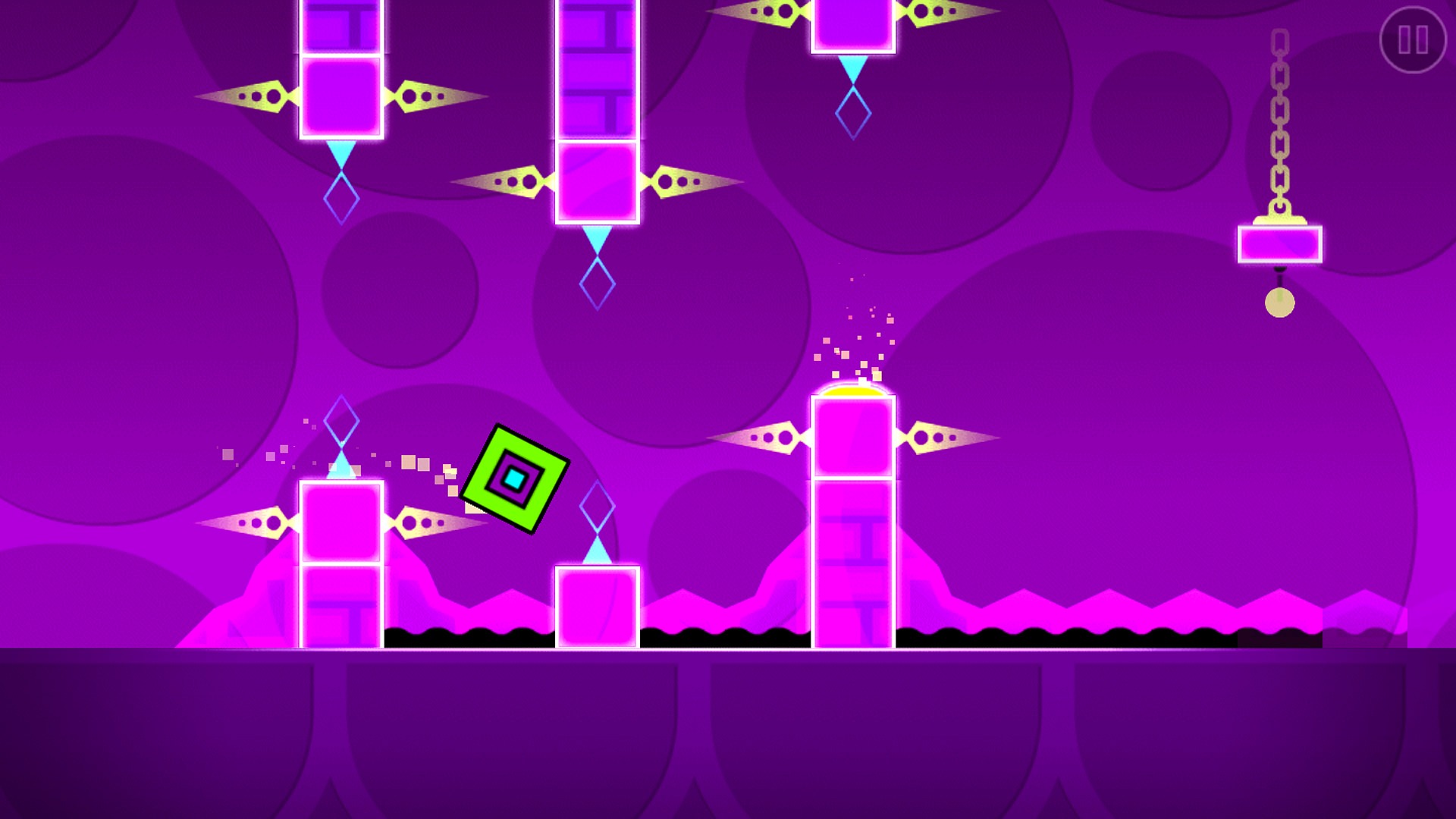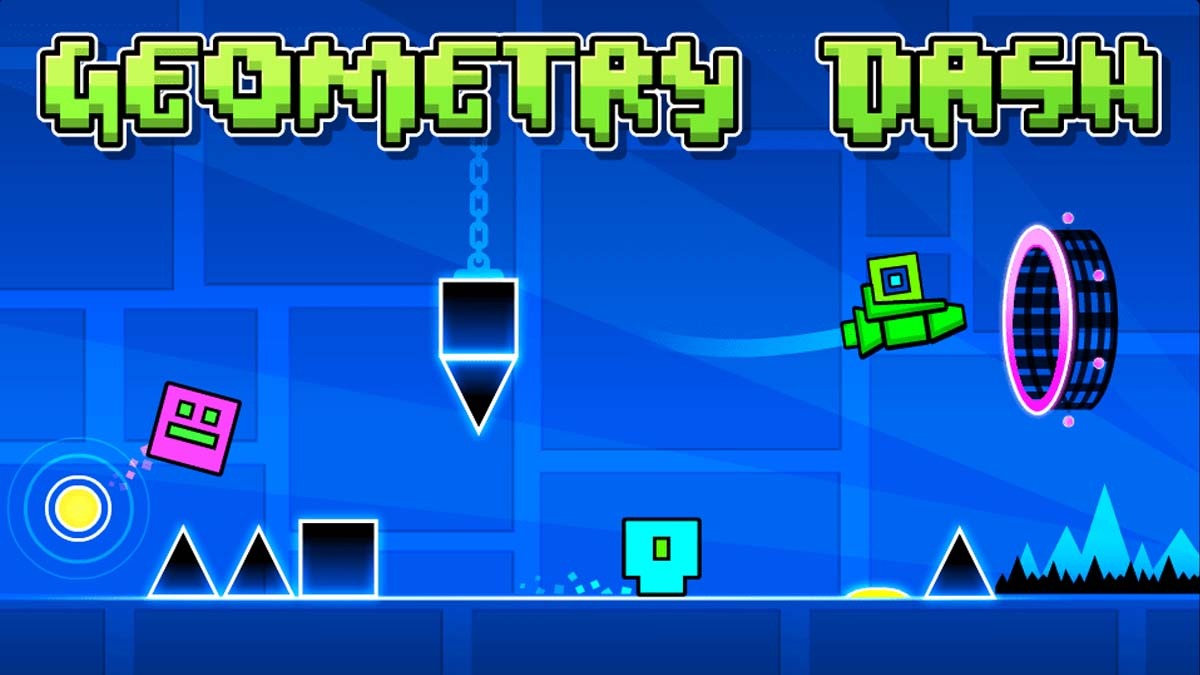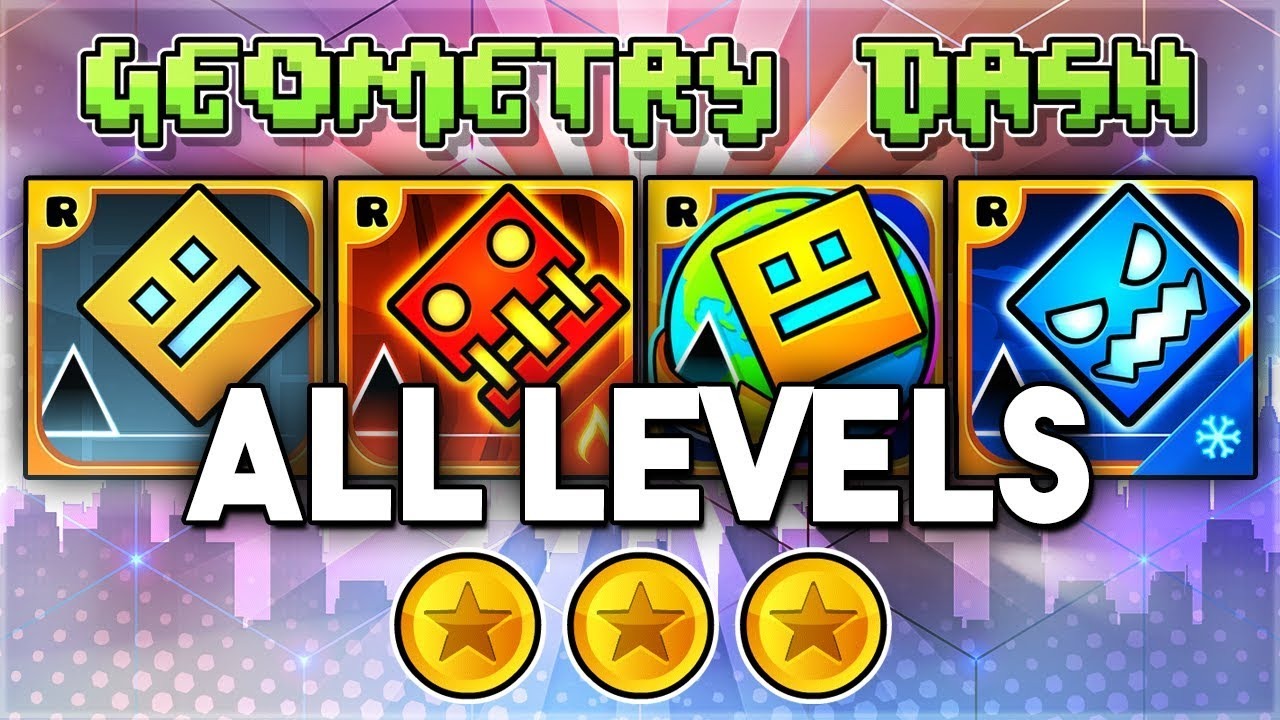
Geometry Dash
All trademarks belong to their respective owners. Get GameGeometry Dash: Master the Rhythm, Conquer Impossible Levels! Get Your Icon & Climb the Leaderboards!
Geometry Dash: The Rhythm-Based Odyssey of Precision and Persistence
Geometry Dash, developed by Robert Topala (better known as RobTop Games), isn’t just a game; it’s a phenomenon that has captivated millions with its unique blend of rhythm-based platforming, unforgiving difficulty, and an almost addictive loop of trial and error.
Launched in 2013, this seemingly simple mobile and PC game has blossomed into a global community-driven powerhouse, where players navigate complex levels filled with spikes, saws, and gravity-defying maneuvers, all synchronized to pulsating electronic music. Its enduring appeal lies in its deceptively straightforward one-touch controls, combined with an immense depth of challenge, extensive customization options, and an unparalleled level editor that empowers players to become both consumers and creators of its punishingly precise worlds.

At its core, Geometry Dash is a rhythm-based platformer where the player controls a block, ball, UFO, wave, robot, or spider through a series of obstacles. The primary action is a single tap or click, which makes the icon jump or activate its special ability. The timing of these taps is paramount, as every jump, flip, or change in gravity must be perfectly synchronized with the level’s layout and often, its accompanying music. The music isn’t merely background noise; it’s an integral part of the gameplay, often providing cues for jumps and movements, transforming the experience into a visually and aurally immersive challenge.
The game’s difficulty curve is famously steep. Even the “easy” official levels require precision, but the real challenge (and the game’s cult status) comes from its harder and “Demon” levels. These levels demand pixel-perfect timing, memorization of intricate sequences, and unwavering focus. Death is frequent and instantaneous, often occurring after a long streak of perfect jumps, leading to moments of intense frustration quickly followed by the compelling urge to try “just one more time.” This cycle of repeated failure and eventual triumph is the core of Geometry Dash’s addictive nature, rewarding persistence and celebrating every small victory. The satisfaction of finally conquering a level that once seemed impossible is a powerful motivator.
One of the most innovative and enduring features of Geometry Dash is its comprehensive level editor. This powerful tool allows players to design and share their own custom levels, ranging from simple challenges to mind-bending, seemingly impossible gauntlets. The editor is incredibly robust, offering a vast array of blocks, hazards, portals (which change game modes or gravity), decorative elements, and triggers (which can control everything from movement to color changes and music synchronization). This user-generated content model is a massive contributor to the game’s longevity, ensuring a near-infinite supply of new challenges. The community continually pushes the boundaries of level design, creating levels that are not only difficult but also incredibly creative, artistic, and often tell a story through their layout.
The online community surrounding Geometry Dash is vibrant and active. Players can rate levels by difficulty, comment on them, and create “Map Packs” or “Gauntlets” that group levels together. The “Demonlist,” an unofficial but highly respected ranking of the most difficult user-created levels, showcases the pinnacle of human skill and dedication to the game. This community aspect fosters competition, collaboration, and a shared passion for overcoming extreme challenges, building a strong sense of belonging among its dedicated players.
Game modes and mechanics add significant variety to the core jump action:
- Cube: The default mode; taps make the cube jump.
- Ship: Controls a flying spaceship; holding down makes it ascend, releasing makes it descend. Navigation requires precise feathering.
- Ball: Gravity flips; taps switch gravity, making the ball stick to the floor or ceiling.
- UFO: Similar to the Ship, but taps make it jump in mid-air. Multiple taps can create a floating effect.
- Wave: Changes direction based on taps; holding makes it go up, releasing makes it go down, creating a zigzag path.
- Robot: A bouncier cube; holding a tap makes it jump higher, releasing makes it jump lower.
- Spider: Teleports between the floor and ceiling with each tap, traversing obstacles instantly. These modes, often combined and switched rapidly within levels via portals, demand quick adaptation and mastery of diverse control schemes, making levels feel fresh and unpredictable.
Customization options extend beyond level creation. Players can unlock various icons (cubes, ships, etc.) and color schemes by completing achievements or secret tasks, allowing for personalized expression. This adds a layer of motivation for grinding out levels and exploring the game’s hidden secrets.
The visual style of Geometry Dash is distinct: simple, geometric shapes, neon colors, and a futuristic aesthetic. While minimalistic, the vibrant colors and dynamic backgrounds, often reacting to the music, create a visually engaging experience that is both clear (essential for identifying obstacles) and stylish. The synchronization of visual effects, such as flashing lights or moving elements, with the beat of the music further enhances the immersion and provides additional cues for gameplay.

Despite its initial mobile focus, Geometry Dash has a strong presence on PC, with many competitive players opting for mouse or keyboard controls for even greater precision. The cross-platform availability ensures that a wide audience can participate in its challenging fun.
In conclusion, Geometry Dash is a masterclass in minimalist design meeting maximum challenge. Its addictive rhythm-based gameplay, unforgiving difficulty, robust level editor, and thriving community have cemented its place as a unique and enduring force in the gaming world. It’s a game that celebrates perseverance, rewards precision, and continuously pushes the boundaries of player skill and creative expression, offering an endless odyssey for those brave enough to tap through its geometric gauntlets.

